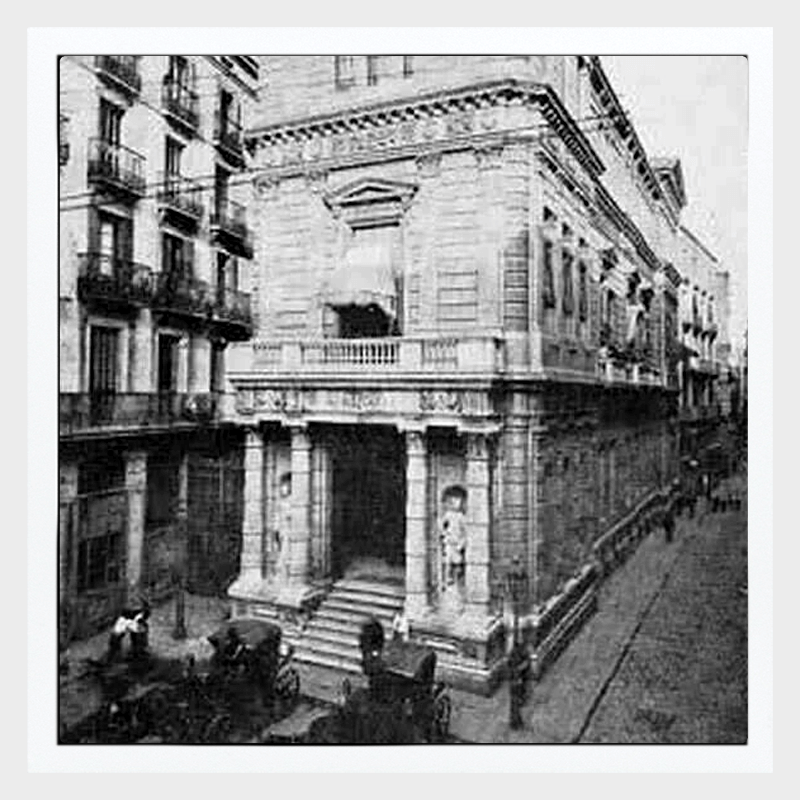Avinyó street was the limit of the western margin of the ancient Roman city of Barcino, due to its structural framework that ran through the first of the walls built to protect the city.
Until the 19th century it was a residential area where families from the bourgeoisie and the aristocracy lived, so there were many stately homes and it was a space frequented by artists. The playwright Frederic Soler, better known by the pseudonym Serafí Pitarra, lived at number 56 of this street, and at number 44, there was a brothel that Pablo Picasso used to frequent, “Ca la Mercè”, which inspired him to paint his famous painting The Avignon ladies.
The building known as the Borsí is also paradigmatic, at the crossroads of Avinyó street and Verónica square, there is a sculpture of the god Hermes, which, curiously, has fulfilled all its mythological functions: the old Casino Mercantil or Borsí, was dedicated to finance until 1915 and then to art and culture, as the School of Fine Arts and, from 1960, as the Llotja School of Applied Arts and Artistic Trades. The building has passed into the hands of the City Council, which is working on its interior restoration to turn it into a facility for citizen use that will include the Andreu Nin library.
Commercially, the Pitarra Restaurant or the Gran Café were outstanding as spaces for good gastronomy, together with places like El Agüelo where it was common in the 90s to listen to performances by artists like Manu Chao who were easy to find in Plaça Orwell and on this street. It has also been a benchmark for trendy fashion, compared to Soho in New York.







